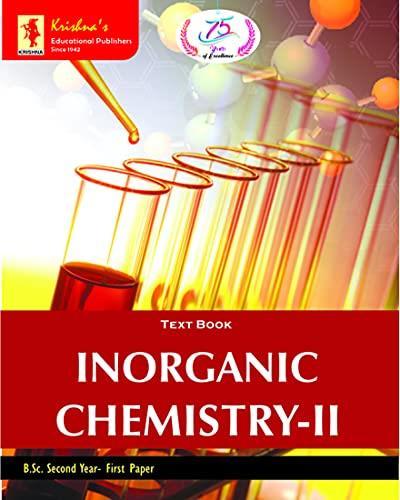
English | 2021 | ASIN: B09654K24T | 213 pages | PDF | 2.52 MB
SYLLABUS- INORGANIC CHEMISTRY-II,
UNIT-I
I. Chemistry of Elements of First Transition Series
Characteristics properties of d-block elements. Binary compounds (hydrides, carbides and oxides) of the elements of the first transition series and complexes with respect to relative stability of their oxidation states, coordination states, coordination number and geometry.
II. Chemistry of Elements of Second and Third Transition Series
General characteristics, comparative treatment of Zr/Hf, Nb/Ta, Mo/W in respect of ionic radii, oxidation states, magnetic behavior, spectral properties and stereochemistry.
UNIT-II
III. Coordination Compounds
Werner's coordination theory and its experimental verification, effective atomic number concept, chelates, nomenclature of coordination compounds, isomerism in coordination compounds, valence bond theory of transition metal complexes.
UNIT-III
IV. Chemistry of Lanthanide Elements
Electronic structure, oxidation states and ionic radii and lanthanide contraction, complex formation, occurrence and isolation, ceric ammonium sulphate and its analytical uses.
V. Chemistry of Actinides
Electronic configuration, oxidation states and magnetic properties, chemistry of separation of Np, Pu and Am from U.
UNIT-IV
VI. Oxidation and Reduction
Electrode potential, electrochemical series and its applications, principles involved in the extraction of the elements.
VII. Acids and Bases
Arrhenius, Bronsted-Lowry, the Lux-Flood, solvent system and Lewis concept of acids and bases.
VIII. Non-aqueous Solvents
Physical properties of a solvent, types of solvents and their general characteristics, Reactions in non-aqueous with reference to liquid NH3 and Liquid SO2.
download скачать
https://nitroflare.com/view/CF73A6183798250/p282y.Krishnas..Inorganic.Chemistry.II.Edition4.pdf
https://rapidgator.net/file/b1a5b5aae3ca2018e1d4d25509e5b929/p282y.Krishnas..Inorganic.Chemistry.II.Edition4.pdf

